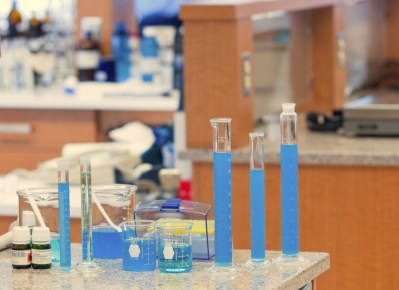Biodegradable PHB with nanoparticles resolves brittle problem
the next wave in the biodegradable plastics market.
In a study scientists in New York report they have developed a new biodegradable "nanohybrid" plastic that can be engineered to decompose faster than the existing plastics used in everything from soft drink bottles to medical implants. The new nanoengineered plastic might provide additional competition in a market that is ramping up to meet the demands posed by environmentally conscious consumers and EU waste regulations. PHB has been widely hailed as a "green" alternative to petroleum-based plastic for use in packaging, agricultural and biomedical applications, state Emmanuel Giannelis and his two colleagues, who are engineering and food scientists at Cornell University. However although PHB has been commercially available since the 1980s, the plastic has had limited use because of its brittleness and unpredictable biodegradation rates. PHB, produced by bacterial action, is a rare example of hydrophobic polymer that is truly biocompatible and biodegradable with high melting temperature and crystallinity, they stated. "However, its strength and some other properties such as thermal stability, gas permeability, solvent resistance, and flame retardance are sometimes not enough for end use," they added. In the study, the scientists compared the strength and biodegradation rates of raw PHB to a modified form of PHB that contains nanoparticles of clay or 'nanoclays'. The scientists found that the modified PHB was stronger and decomposed faster than regular PHB. The nanohybrid PHB decomposed almost completely after seven weeks, while regular PHB exhibited almost no decomposition, they stated in a paper. "One advantage of clay nanocomposites is their improved barrier properties while retaining the flexibility and optical clarity of the pure polymer," they stated. "Recently, biodegradable aliphatic polyester nanocomposites have been reported in the literature, but no report exists on PHB/layered silicate nanocomposites with their improved properties, including biodegradation." They also claim to have demonstrated that the rate of degradation could be fine-tuned by adjusting the amount of nanoparticles added to the PHB. "The change in biodegradation is rationalised in terms of the crystallisation behavior of the nanohybrids as compared to that of the neat polymer," they stated. The study is the "first report of the biodegradation of PHB nanocomposites" and could lead to wider use of PHB plastics, the scientists claimed. "Concerns over the persistence of plastics in the environment, shortage of landfill space, emissions during incineration, and negative impact on wildlife through ingestion and entrapment have increased research and development efforts on biodegradable polymers," the scientists stated. "However, improvements in biodegradability typically come at the expense of performance, and trade-offs often need to be made in achieving performance while maintaining biodegradation." Some companies predict that the biodegradable packaging market will grow by about 20 per cent a year. The materials are seen as an alternative to petroleum-based packaging such as the widely-used polyethylene terephthalate (PET). This year, Cargill announced it was teaming up with Japan-based Teijin to produce polylactic acid (PLA). A similar alliance has been formed between DuPont and Plantic. Materials such as PLA are made from a variety of plants. To produce PLA manufacturers use a chemical polymerisation process to transform renewable raw materials such as corn into a biodegradable biopolymer. Meanwhile biodegradable polymers such as polyhydroxyalkanoates (PHA), PHV and PHB are produced by the actions of genetically modified micro-organisms. Demand for bioplastics in Europe experienced its first boom last year, according to a survey by the European Bioplastics Association, which has about 70 members. Currently bioplastics accounted for less than one percent of the European plastics market last year, according to the organisation, though environmental based mandates from retailers might drive that share higher. The Cornell study was published in the November issue of American Chemical Society's Biomacromolecules, a bi-monthly journal. It is available here: http://pubs.acs.org/cgi-bin/sample.cgi/bomaf6/2007/8/i11/html/bm700500t.html.






